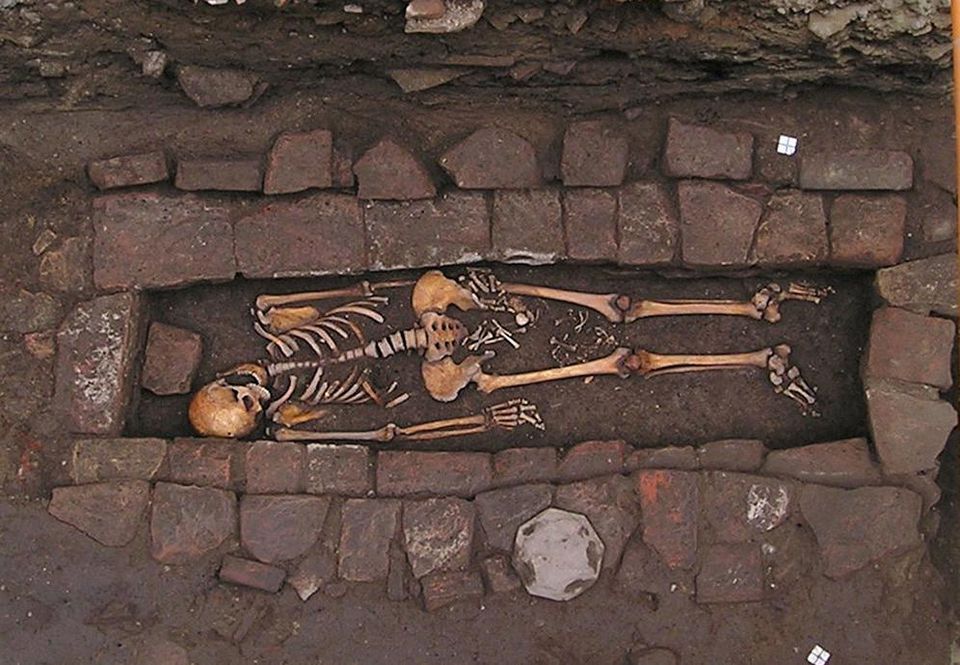A skeleton of an injured pregnant woman found in an early Medieval grave near Bologna, Italy, included fetal bones placed between the woman’s legs.
Based on the position of the small bones, researchers say that this is an example of a coffin birth, wherein a baby is basically expelled from a mother’s body when she dies. They add that the woman’s injury, a head wound, may be related to her pregnancy, Forbes reports.
The stone-lined grave has been dated back to the 7th-8th century AD, and was unearthed in Imola in northern Italy in 2010. The female skeleton was buried face-up and intact, so archeologists concluded that this was a purposeful burial. But the fetal bones and the head injury posed interesting questions, leading to further investigations.
Researchers at the Universities of Ferrara and Bologna examined the tiny bones, and estimated based on the length of the femur that the fetus had reached 38 weeks. The fetus’ head and upper body were found below the woman’s pelvis while the leg bones were still inside, showing that the baby had likely been partially delivered when the mother died.
Post-mortem fetal extrusion, or coffin birth, is rare in modern forensics and medicine, and much more so in archeological records. Sian Halcrow of the University of Otago explained that when pregnant women die, sometimes the gas that is produced during normal decomposition builds up, forcibly ejecting the fetus inside the body.
While this example of coffin birth is already quite interesting, especially in archeology, the mother’s head injury made the case unique: she showed a small cut mark on her forehead, and a circular hole measuring 5mm next to it. These are proof of trepanation, an ancient form of skull surgery.
The researchers suggest an explanation for the surgery and pregnancy: eclampsia. They wrote,
Because trepanation was once often used in the treatment of hypertension to reduce blood pressure in the skull, we theorized that this lesion could be associated with the treatment of a hypertensive pregnancy disorder.
Halcrow says that it is “pleasing to see a study that is focused on maternal and infant mortality and health in the past, because this subject is often overlooked.”
The study was published in World Neurosurgery.
























